Fall/Winter 2021
Volume 31, Edition 2
Contents
Energy and Climate Change
By Ron Edelstein
The year 2020 was tied for the hottest year on record. Or will it be the coolest year for the next 50 years?
- A heat dome has formed over the Western US, with temperatures in June hitting 115°F in Arizona and Nevada. At Lake Mead, which supplies water to 25 million people, water levels have plunged to their lowest level ever. In California, farmers are abandoning their thirstiest crops to save others, and communities are debating whether to ration tap water.
- Texans endured a massive blackout in February and, despite assurances by the system operator, ERCOT, they have already been asked to reduce consumption of electricity.
- We are seeing the impacts of climate change already; we don’t have to speculate on what might happen in 2050 or 2100!
Carbon dioxide (CO2) levels reached a historically high level of 419 parts per million (ppm) this May. Pre-industrial levels of CO2 were about 280 ppm. The last time CO2 levels were this high was during the middle Pliocene era, about 3.6 million years ago. Sea levels were 82 feet higher than today; the Arctic was ice-free; and global temperatures were 2–3oC (3.6–5.4oF) higher than today.
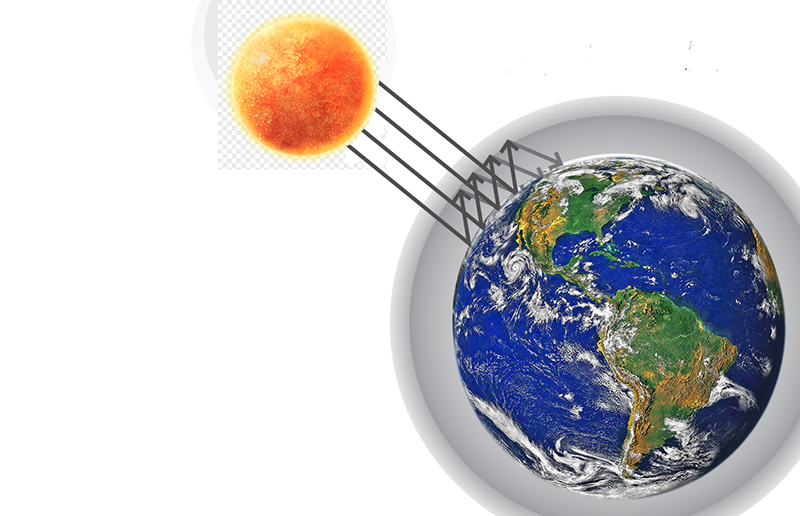
As solar radiation reaches the Earth, it comes to us in different wavelengths as a function of the sun’s surface temperature. Most of the energy is in the short wavelength ultraviolet (UV) and visible light ranges. Most of the UV radiation is absorbed in the stratospheric ozone layer. The remaining radiation passes through the atmosphere and heats the Earth’s surface.
The Earth in turn radiates this energy toward space. Since the surface temperature of the Earth is lower than the sun’s, this energy is radiated toward space at longer wavelengths in the infrared (IR) range. Gases like CO2 and methane absorb some of this IR radiation and reflect it back to the Earth’s surface, heating the surface even more, much as the glass in a greenhouse allows the sun’s radiation in, while reflecting back to the surface the Earth’s radiation.
CO2 levels track very closely with global temperatures. [Fig. A] Records from ice core samples demonstrate an amazing correlation between CO2 levels and average global temperatures over the eons.

Temperature Change (light blue) and carbon dioxide change (dark blue) measured from the EPICA Dome C ice core in Antartica (Jouzel et al. 2007; Lüthi et al. 2008)
Our energy use is a major contributor to the rise in CO2. Fossil fuels, coal, oil, and natural gas produce CO2 as a product of combustion. Coal produces 207 pounds (lb) of CO2 per MMBtu1 (Metric Million British Thermal Units), oil produces 160 lb/MMBtu, and natural gas 117 lb/MMBtu. Whenever fossil fuels are used, CO2 is released. There are other sources of CO2, but those sources are dwarfed by CO2 produced from fossil fuels.
If we look at total greenhouse gas2 [Fig. B] (GHG) emissions, the largest amount of emissions in the United States comes from transportation, followed by electricity generation, industrial energy use, buildings, and agriculture. This is a recent change from historical levels, where coal-based electricity generation was the primary source of GHG emissions. This is due to increased natural gas production in the United States since the mid-2000s. In the graph at right, you can see that electricity CO2 emissions dropped precipitously after 2005 as coal use decreased and natural gas use increased.

U.S. Environmental Protection Agency (2020). Inventory of U.S. Greenhouse Gas Emissions and Sinks 1990–2018.
Today, the transportation sector is our largest source of CO2, and petroleum is our largest CO2-producing fuel in total. [Fig. C]

Energy-related carbon dioxide emissions by sector AEO2021 Reference case.
Energy-related carbon dioxide emissions by fuel AEO2021 Reference case.
The sector graph displays that the transportation sector is our largest source of CO2, above industrial, electric power, residential, and commercial. The fuel graph shows petroleum as our largest CO2 producing fuel, above natural gas and coal.
In the transportation sector, more electrification of vehicles can reduce climate change if the source of electricity emits less CO2. Today’s electric vehicles (EVs) can get more than 100 MPG equivalent and hybrid vehicles can get 45–55 MPG.
In the buildings sector, high-efficiency appliances (water heaters, furnaces, and central air conditioners) can make a difference, plus energy conservation efforts like added insulation and double-paned windows.
Should we be moving to increased electrification in our vehicles and appliances? This depends on the CO2 output of the electric generating system. Increased electrification, including home charging stations for EVs, will also require more electricity generators and reinforcing our local electricity distribution systems.
Decarbonizing the industrial sector will be harder. Maybe carbon capture and sequestration (CCS) makes sense here, where the CO2 is captured and stored deep underground “permanently.” Use of renewable alternatives is also possible here.
To reduce climate change we need to increase the use of renewables (solar, wind, hydropower) and other zero-CO2 options like nuclear to generate electricity. Coal-fired generators should be shut down quickly, and natural gas plants, while efficient and the lowest CO2-producing fossil fuel, may need CCS to move toward zero carbon. Increasing renewables poses its own challenges, like adding transmission lines to get power from remote solar or wind locations to the grid, electricity storage, and reliance on precious metals. And nuclear energy needs to address safety and waste disposal issues.
What about 100% zero-carbon energy? While solar and wind generation are growing, they are nowhere near the level needed to close all fossil fuel plants. Plus, since solar and wind are intermittent, electricity storage is necessary in the form of hydropower, utility-scale battery storage, or even low-emitting natural gas. It’s not clear that lithium-ion batteries are the ultimate battery solution, either for EVs or utility storage. Airplanes are notoriously difficult to fuel with non-liquid fuels, but alternatives like renewable jet fuels from organic wastes and ammonia are being studied.
“Green hydrogen,” derived from renewables and water, is being explored both for fuel cell vehicles and stationary applications.
Is natural gas part of the solution or the problem? While it is the lowest CO2-producing fossil fuel, methane, the major component of natural gas, is a very potent GHG, with 23–28 times the global warming potential (GWP) of CO2 long-term, and over 80 times the GWP short-term. Methane leakage, estimated as 1.5% of throughput, must be reduced, and “super emitter” sites must be eliminated. Ultimately, CCS for natural gas power plants will be necessary to fully decarbonize.
So what could happen if we fail to substantially reduce CO2 emissions, or fail to meet the Paris Agreement’s3 charge to keep global warming to less than 1.5–2oC (2.7–3.6oF)? [Fig. D]

Failing to substantially reduce CO2 emissions or meet the Paris Agreement’s expectations strongly increases our chances of heat waves and other natural disasters.
The critical events listed and their evidential link to climate change include extreme heat, coastal flooding, extreme precipitation (excess rain, stronger storms), severe drought (for many sections of the southwest United States), and stronger, more frequent hurricanes and tornados.
Severe drought regions are
shown at right. [Fig. E]

Nevada, Arizona, Utah, New Mexico, and a portion of Colorado experienced exceptional droughts in the spring of 2021.
Is there a “point of no return,” a tipping point, where we can’t reverse the effects of climate change even if we wanted to?
Recent studies have shown that there is a positive feedback loop between these tipping points. Recent UN and International Energy Agency studies have called for keeping global warming to less than 1.5oC, similar to the Paris Agreement, to keep these tipping points from getting out of control. We are now at over 1.1–1.2oC of global warming! [Fig. F]

Evidence that tipping points are under way has mounted in the past decade. Domino effects have also been proposed.
Global geoengineering solutions have been proposed. One is massively sprinkling the atmosphere with sulfur or nitrogen compounds to increase the reflectivity of the atmosphere, sending more solar energy back into space. However, unintended consequences like increased acid rain could occur with these geoengineering solutions. Natural approaches like increasing sea grasses, building up mangroves and other natural coastal barriers, reforestation, no-till farming, and cover crops4, have been suggested and are being experimented with. Large-scale direct air capture of CO2 in the atmosphere is being explored. But the low concentration in air (419 ppm is 0.04% in air) compared to coal or natural gas plant CO2 emissions (about 15% in air and 4% in air, respectively), make it more expensive and challenging to separate the CO2 directly from the air.
Other renewable technologies are available aside from wind and solar, including wave power, tidal power, ocean thermal, geothermal, biofuels, green hydrogen, green ammonia, and renewable natural gas. They are at various stages of development and use, and offer zero-carbon solutions. Other zero-carbon options like small modular nuclear reactors are also in development.
The Biden Administration has already taken positive steps forward, re-signing the Paris Agreement, revising how the Environmental Protection Agency calculates environmental benefits, and halting the Keystone XL pipeline. However, regulation of power plant CO2 emissions has not yet been put in place at the federal level. The proposed Clean Energy Standard could do so, but will it get through a divided Congress?
And how about world action? The European Union and the US have committed to a zero-carbon economy by 2050 and China by 2060. But China’s use of coal is increasing, and it is building hundreds of coal plants in the developing world. Can the world work together to reduce GHG emissions and keep global temperature increases below 1.5oC?
It remains to be seen.
1 One MMBtu is about the energy used in a natural gas furnace running 10 hours on a cold winter day.
2 GHG include CO2, methane, and
other gases.
3 The Paris Agreement is a legally binding international treaty on climate change adopted in 2016 and signed by 196 nations.
4 Cover crops are plants that are planted in the off seasons to cover the soil rather than for the purpose of being harvested.
Back to the Table of Contents
Passing of A Dear Friend and Colleague
Reprinted with permission from Scholarly Pursuits, a publication of the Montgomery Scholars Program.
By Mary Furgol
It is with profound sadness that I announce the death of Dr. Dianne Ganz Scheper on February 19, 2021. Dianne was one of the principal founders of the Montgomery Scholars Program which began in 1999 – this year marks the 20th anniversary of the graduation of the first class of Montgomery Scholars.
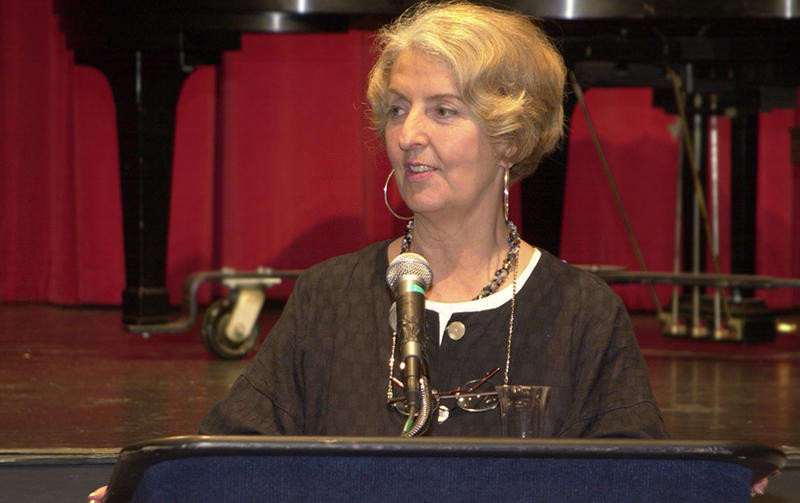
Dianne’s accomplishments were extensive. She had a PhD from Catholic University in Religious Studies and wrote her dissertation on the sacred in nature, focusing on the writings of Annie Dillard. Dianne was Director of the Honors Program at Montgomery College for many years as well as the first director of the Montgomery Scholars Program. She also taught World Literature to the first three classes of Montgomery Scholars. She team-taught a course on The American Wilderness, incorporating hiking, history, and literature, with our own Professor Michael Petty, who maintained the Harper’s Ferry retreat tradition with the Montgomery Scholars after Dianne retired from Montgomery College in 2002. Dianne continued to teach at Johns Hopkins University after leaving Montgomery College and inspired many students there too. She will be missed by students, faculty, and indeed by all with whom she came into contact.

To know Dianne was to know laughter, love, and joie de vivre. She had an exceptional intellect and communicated her passion for literature effortlessly and contagiously. I still remember the day she announced to the class that they had to read both Heart of Darkness and Things Fall Apart in a week. She announced it with such joy, as if she were giving them a special treat (though she did advise them that they might want to brew several pots of very strong coffee before they started). I particularly loved her introduction to the romantic poets as well as her discussions of the writings of Tagore.
It is fitting to end this with a Wordsworth quote that is rooted in the natural world from which Dianne drew such spiritual inspiration and which she communicated with such love:
And when the stream that overflows has passed
A consciousness remains upon the silent shore of meaning;
Images and precious thoughts that shall not be
And cannot be destroyed
from “The Excursion”
Indeed, our memories of her will not dim and our deepest condolences are extended to her husband, George, and all her family.
Back to the Table of Contents
Kickin’ Up My Feet During Covid
By Judy Ashley
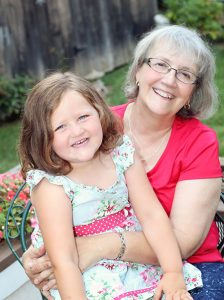
My closest friends seldom know how often country western music plays on the radio in my house. They probably associate me with classical or chamber music unless they knew me 30 years ago when I was living in the cowboy country of Eastern Oregon. Certainly, they never suspected me of two-stepping on the dance floor of the Antler’s Bar on Friday nights. But music for me always meant dancing. I never played an instrument. I never sang in any chorus. I know almost no words to any song, including the standard holiday ones. My grandfather taught me to dance before I was five years old. He put a record on his player and he took my hand and we did polka or square dance step. We twirled in circles, gliding across the floor. Music meant one thing—dancing—and like magic, wherever I lived as I grew older, I found the best place to dance.
Living in cowboy country in the early 1980s, Friday night at the Antler’s was a given. But a lot of other things happened, too. At the rodeo each fall, there were the horse races and the bull riding events, which I watched with my hands over my eyes; brandings on ranches when cowboys explained the commotion; fording a stream in my pickup to spend a weekend in a remote mountain shack, carousing with friends. I met wagon cooks, bow-legged buckaroos, and hearty ranch women who hobbled to sit on a fence for a bit. I even cleaned out my closet, leaving one skirt, several pairs of jeans, and a couple of flannel shirts.
My daughters played in the “back” among sagebrush and mesquite, drove tractors on their friend’s ranch at age 12, and trekked to school for two blocks, meeting up with classmates from the local Paiute reservation. They learned to change irrigation pumps as a routine task when staying overnight and won 4-H ribbons regularly for table setting and meal planning. They walked nearly everywhere and if mischief was afoot, some community neighbor let me know.
I cried, laughed, whispered, and cursed while living miles from nowhere. Beginning in the spring as soon as the roads had no ice, twice a month we went OUT, to the nearest community with a shopping mall, approximately 120 miles away. On these trips, we played tapes of music, because radio station transmission did not exist. We kept track of our progress by landmark mileposts; Milepost 79 being where a gravel pile existed and our friend, a state trooper, explained how it was used for a speed trap.
Regardless, on any trip OUT on Friday, my family knew it was Antler’s time when we got home. The kids hauled several wood pieces into the wood stove storage bin. We stoked the fire for the next hours, picked up the babysitter, and stopped for a special movie and treat at the video store. The girls loved movie night while mom and dad went dancing.
Last year in March when the pandemic hit my current world in suburban Washington, D.C., a long trip from cowboy country, I spent more time at home and became quite nostalgic. I switched the radio to country-western music and allowed memories of my grandpa to come on strong. There was a lot of foot-stomping around the house, and imagining the dust billowing around me, gazing out on the miles and miles of tablelands with a cluster of mesquite around a metal water tank. Of course, I did not anticipate that the pandemic would last so long, so country-western music now is standard, played all the time. Often people ask what one has been doing during the lockdown, and I tell them, at a time when so many seem puzzled, lost, or struggling, I listened and relished the years dancing and kicking up my feet in cowboy country.
Back to the Table of Contents
The Worst Typhoon in the History of the Pacific
By Mike Abell
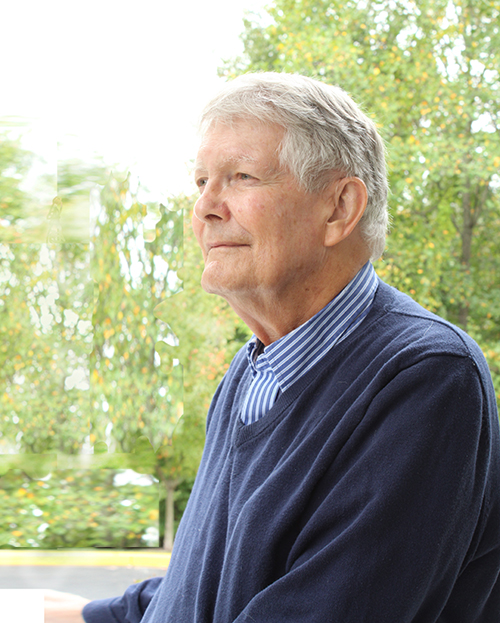
The ship rocked mercilessly,
first to starboard and then to port, and through the porthole, all I could see was the ocean with its thick, deep waves, followed by a dizzying roll of the ship to reveal only open sky, cloud-covered and full of rain. There I was, in the middle of the Pacific Ocean, on a ship headed from Seattle, Washington to Tokyo, Japan, a frightened nine-year-old boy, dreadfully seasick for three straight days, beyond caring whether I lived or died, just wanting to quit rolling over and over and over.
How had I gotten myself into this situation?
It had been quite a journey to get to this moment, just those few days out from the port of Seattle. The journey began in Canton, Ohio—well, actually, it had begun even before then, when we had been living in Hyattsville, Maryland, after my dad had returned from the war in Europe to be assigned to the Military District of Washington.
Early in the spring of 1950, my dad got orders to report to Tokyo, Japan. He was to go ahead of us and we would follow a couple of months later. Unfortunately, the Korean War erupted in June, and all civilian transportation to Japan was halted. The army needed the ships of the Military Sea Transportation Service (MSTS) to send troops to fight the war. So, instead of going to Japan—and oh, yeah, we had already gotten our shots: tetanus, cholera, yellow fever, typhus, typhoid, a whole barrage of needles—we moved to Canton, Ohio where my mom had grown up and my grandmother still lived. And there we sat for the next year and a half.
We got the news that we would be shipping out in December 1951. Once again, my arms were assaulted by needles and I went through the whole battery of shots to help me survive living in the Far East.
And then, the big day arrived. We were, at last, going to board the train to be whisked to Seattle and put on board the ship that would escort us to Japan. Except—wouldn’t you know it—the night before our train was scheduled to depart, Canton had the worst snowstorm in its history. I remember it was so cold that the hairs in my nose froze. Believe me, that was cold. But somehow, we managed to make it to the train station on time, thanks to a plucky and resourceful taxi driver. The train managed to actually get underway, and it was then that the big adventure began.
After a three-day journey, we arrived in Seattle, only to be greeted by the worst rainstorm in the history of the Pacific Northwest. We were at the port of Seattle for two days, and it never stopped raining. Boy, were we glad to get on that wonderful MSTS ship!
After all that we had encountered along the way, we embarked a few days before Christmas. Off we sailed, merrily headed to Japan. But don’t forget the title of this little story. Sure enough, within a few days, the typhoon struck. It was so awful that everyone on that ship, and I do mean everyone—except a few hardy souls, including my mom—was seasick. There was a huge number of soldiers on their way to Korea who were living below decks in the hold; they were wretched down there and so sick they believed they would die before they even got to the war. It was so bad that even Santa Claus got sick and the Christmas Eve festivities had to be canceled.
“Oh, it’s a very simple remedy,”
But then a miracle occurred, in the form of a Filipino steward. He came into the stateroom that I shared with my older brother, and offered us what he claimed was just the tonic we needed. “What can possibly save us?” I asked him, groaning.
“Oh, it’s a very simple remedy,” he replied. “Lemon slices and saltine crackers.”
“That will cure my seasickness?”
I asked.
“It works like a charm,”
“It works like a charm,” he replied. “Let me leave some lemon slices and a box of saltines for you boys. And be sure to suck those lemons dry.”
I didn’t believe it could work, and I wasn’t sure I would like sucking on a lemon, but I figured he probably knew something, having traveled on big ships for his job, so I gave it a try. Amazingly, it worked! I don’t know the science behind this antidote to seasickness and upchucking, but I can testify that my stomach settled down almost immediately. The saltines were wonderfully salty and crunchy and tasty and probably coated my stomach. I don’t know how the lemons worked, but they did refresh me, and I fell in love with the flavor. I was definitely much better by the time a few days later when the weather cleared and the ship slowly settled down to the normal kind of rocking motion you might expect on an ocean voyage.
Eventually, I decided to venture out on deck. When I got out in the open air, into the sunshine that was warm and soothing, I discovered that the troops, who had been kept in the hold through the typhoon, had also been allowed out on deck. Being a nine-year-old kid, and an army brat, I ventured forth to see if I could hang out with any of them. Luckily, I met a couple of GIs who didn’t mind chatting with me. After we had performed the ritual that all army folks perform on the first meeting — “Where ya from?”—we talked about the storm. These guys confessed that they had been so sick they decided that they would never make it to Korea, which was not good, but given what was going on there, I guess it wasn’t so bad, either. I wanted to impress them, so I drew myself up to my full four-foot ten-inch height and, smiling broadly, said, “lemons and saltines.”
“Lemons and saltines? What’s that for?”
“Lemons and saltines? What’s that for?” they asked. I told them about the wonderful Filipino miracle worker’s anti-seasick remedy.
“Wait a minute. Lemons and saltines? And it worked?”
I assured them it did. The next day I ran into these two guys again, and they thanked me. They said they were still feeling queasy down there in the hold, so they tried my trick, and it had actually settled their stomachs. They had passed this idea on to their bunkmates, and were now regarded as miracle workers themselves.
As you can imagine, I was quite proud of myself after that.
The rest of the trip was uneventful. But I never did see Santa Claus. Guess he hadn’t learned about the lemon-saltine cure for seasickness. That voyage, by the way, which normally took eight days, instead took 13 days. Worst typhoon in the history of the Pacific.
Back to the Table of Contents
Margaret Thatcher, Princess Diana, Joan Rivers, and—Me!
By Les Weinstein
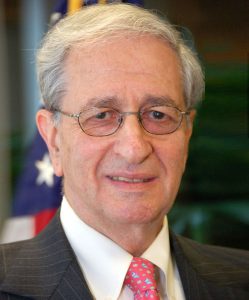
London unexpectedly star-studded.
In June, 1993, I went on a trip to England with my son Jim, who had just graduated from college. We started in London where we spent several days taking guided tours of the must-see sights and attending a tennis match at Wimbledon. On the fifth day, we had nothing planned, so we decided we would do separate things and then meet back at our hotel for dinner. My plan was to walk around the city, maybe re-visit some of the places we had seen earlier in the week, and explore a few of them in more depth, now that I had a better sense of London than I did when we had first arrived.
Later that day, when I was walking back to the hotel, I noticed the former Prime Minister, Baroness Margaret Thatcher, in the back seat of a chauffeur-driven Jaguar that was stopped at a red light. I immediately hailed a taxi and told the driver to “follow that car” as if I were in a movie chase scene! He did so until it stopped at Spencer House in St. James’s Place. Ms. Thatcher got out of the car and went into the mansion before I had a chance to take a picture of her. Spencer House has been owned since 1756 by successive Earls Spencer, including Diana’s late father and the current owner, Charles Spencer, ninth Earl Spencer, her brother. Since the 1940s it has been rented out to clubs, offices, and as venues for various events.
There were about a dozen press photographers standing near the entrance. I walked over and chatted with a couple of them, asking what was going on, and if they thought I would be able to take a picture of Ms. Thatcher later when she left. If I could not, I would leave and go back to my hotel. They immediately suggested that I not leave, and gave me a press release that said that Her Royal Highness, Diana, the Princess of Wales, would be attending a Spencer House event that evening. It stated she would be a guest of the James Madison Council of the Library of Congress in her capacity as Patron of the National Council for Child Health, in support of immunization of hard-to-reach children. One member of the Madison Council had recently made a generous donation to this immunization program. The Madison Council, a private-sector advisory body of the Library of Congress, was in England for one week on a tour of great British libraries.
The photographers also gave me a list of the arrival times of the guests, which indicated Diana was due to arrive at 7:00 p.m., just a few minutes away. The list showed that also attending were Mr. and Mrs. Mark Thatcher, the Baroness’s son and daughter-in-law, and Joan Rivers, who I was told would be the evening’s entertainment.
At exactly 7:00 another chauffeur-driven Jaguar drove up, this one with Diana in the back seat. She got out of the car and went toward the entrance of Spencer House, where she was formally presented with flowers by a little girl.
All the photographers took many pictures of this presentation, but after Diana went inside, several of them, including the two I had befriended, were complaining they were unable to get good photos of her face because her back was mostly toward them. One of them decided to go into Spencer House and ask the person in charge to have the flower presentation re-staged with Diana in a different position so they could get better pictures of her. I thought such a request would never be granted to a member of the paparazzi! But, alas, I was wrong! A few minutes later Diana came out with the little girl; they were placed in reverse positions than in the first photo op; and they did the flower presentation again, much to the satisfaction of the photographers.
Instead of going back inside, Diana surprisingly started walking toward the photographers and me. She was even more stunningly beautiful in person than her photographs! The photographers started to call out to her in a cacophony of sounds all at once, most of them shouting repeatedly: “Di,” “Lady Di,” “over here,” “come over here,” “talk to me.” I was surprised at their informality and casualness, I do not think I heard any of them call her “Your Royal Highness” or “Your Highness” or “Princess Diana.” They were using the same nicknames the press had used before she married Prince Charles and became The Princess of Wales. However, she did not seem to mind at all what, to me, seemed like disrespect and even a breach of etiquette. She engaged in friendly conversations with individual photographers or in small groups of two or three of them. She seemed to know most of them and greeted some by their first names, which was the case when she came to the two that I was standing with. She did not speak to me nor did I say anything to her, probably because I was too busy rapidly taking as many pictures of her as I possibly could!
A few minutes after Diana went back inside, Joan Rivers appeared in the wrought-iron fenced garden area of Spencer House and asked: “Which one of you is the American photographer?” (I assumed that the photographer who had earlier gone inside to complain about the flower presentation, had at the same time told someone that there was a press photographer from the US, supposedly me, covering the event, perhaps as a way to get Ms. Rivers to come outside and pose for some pictures.) I replied to her that I was just an American tourist with a camera, not a member of the press. She laughed and said a few funny things, and we engaged in a little repartee. After I took a couple of pictures of her, she went back to the event. I left at that point without ever getting a photo of Ms. Thatcher.
When I got back to the hotel, my son asked what I had done that day. I told him that I had seen Margaret Thatcher and Princess Diana, and had spoken to Joan Rivers. He said: “Oh, right, Dad. What did you really do?” I told him that was what I did, and that I had taken many photos to prove it!
When we got back home, I immediately brought my pictures to be developed. He was the first person I showed them to, followed by other family members, friends, co-workers, acquaintances, and anyone I thought might be even remotely interested in seeing them. And now, after all these years, I am writing about this experience! Have I become a paparazzo? No, I’m still just another American tourist with a camera … and a good story!
Back to the Table of Contents
My Hurricane Memoir
By Sam Dowding
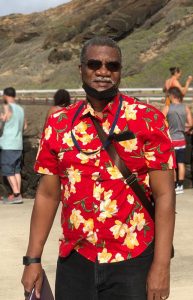
Labor Day, 1995, a regular business day on the Caribbean Island of Antigua. The first whiffs of hurricane Luis were heard around nine that morning. My landlord and I were in the process of placing plywood protection over the huge picture windows that adorned the northern and western outer walls of our living room. We heard but did not yet feel the intermittent strong breezes that rifled through the trees on the hill above. Boarding-up completed, we were confident that the house would readily withstand the hurricane, given the sturdy eight-inch-thick concrete walls. Even though we had a 25,000-gallon rainwater cistern in our foundation, we filled the two bathtubs and settled down to wait out this novel hurricane experience.
The Antigua Public Utilities Authority (APUA), our electricity supplier, had cut power island-wide at 10 that morning, and as evening descended we had a sumptuous dinner. All-day long the wind had steadily whiffed louder as the tempo increased. Initially, it sounded like the buzzing of the Easter Sunday “singing-engine” kites on the seawall of my native Guyana. Occasionally, the sound intensified to the growl of a revved turbo-charged engine. By nightfall, the heavy rain had obscured our neighbors to the north with a foggy grey sheet, leaving no doubt in our minds, as Redd Foxx was wont to say, “This is the big one!”
Lacking electricity, we distracted ourselves with crosswords and Scrabble by candlelight, played word association and geography trivia with the kids, and listened to the met office’s radio updates. None of us could sleep even a wink that night. Well, except for my 11-year-old who had curled up on our bed and gone to dreamland by nine p.m.!
Amid the incessant howling of the wind and the unrelenting rain, I was shocked to hear, around two a.m., a sharp sound, immediately reminiscent of the klaxon horn of the Bedford lorries of my childhood. I cautiously approached a living room window to peer for the vehicle’s lights. The sharp klaxon horn blared again, this time above my head.

Nervously lifting my eyes upward and to the right, I could see the sky, lit by flashes of lightning. That klaxon sound was caused by the wind lifting the section of the roof over my living room. “Brraaack! Brraaack!” Was the hurricane roof strap broken? With every gust of the intense wind I could see that the roof lifted about six inches, then reclined.
Motivated by the fear that the roof might disappear to other geographies, and rallied by my wife, my older son and I cleared the living room of all our furniture in less than five minutes. Over the next few hours, as Luis pounded Antigua, I tensed whenever that klaxon sounded, and directed the beam of my flashlight to the living room chandelier. If it was still there, then so was the roof to which it was attached. The chandelier swayed—and stayed.
We had elected to wait out Luis in our house, most importantly so that we could rotate closing and opening windows on the leeward side of the storm as it passed over us. This was the key to moderating the internal pressure within the house. Perhaps it was those steps that saved the roof. Or maybe it was divine providence.
When dawn broke, the only respite was that we could now see, as well as hear, the intense rain whipped by category-five winds. Leaves and broken tree limbs littered yesterday’s pristine lawn, cut just two days before. With an afternoon lull in the storm, we ventured outside to survey the damage. We saw an object nestled in the bush in the empty lot opposite our home. It seemed to resemble the wing of a small airplane. In the driveway, on our hedge and in the front yard, we were shocked to see three panels of our garage door. That “airplane wing”? It was the fourth panel of our garage door. The garage had taken quite a beating. We lost the door as well as the lattice laths on its external walls.
Overnight, water had seeped into the house and even soaked the wall-to-wall carpeting in our bedroom. Two days later, the odious scent that arose demanded carpet replacement, and by the end of that week, my landlord had also reinforced the hurricane roof straps and cut back the stylish but impractically wide overhang of the eaves.
We would later muse at the oddity that the candle in our bathroom stayed lit for over 13 hours. Similar candles in the bedroom and kitchen had to be replaced three times in that period. Most notable outside was the ambient fresh smell. Unlike the stale and rotting vegetation odors after previous rainstorms, now it felt like a brand-new beginning had washed over us.
Electricity was not restored to us for nearly three months. It pained us to see the utility trucks that roved up and down, yet we had no power. At night we could see that homes across the valley had lights while we suffered on. Although my landlord provided us with a gasoline generator after a month, our relief was tempered by the price of petrol that limited us to only six hours of generator power daily for those next two months.
After my assignment there ended, it seemed as if Antigua was targeted by hurricanes every two or three years. After such storms, we would call our former neighbor to see how she and her family had survived. In 2006, after relieving our concern for their own safety, my neighbor exclaimed “Sam, your roof is in our yard!” Sadly, the new tenants had decamped to a hotel to ride out the storm. No one stayed home to rotate closing and opening windows, thereby to minimize the build-up of internal pressure. Their roof popped!
Back to the Table of Contents
The Last Straw
By Charles E. Sternheim

Not after he barks up the wrong tree for two hours
and is completely bushed
not after he cuts corners for two hours
and still must cut to the chase
not after he crosses that bridge
and still can’t see the forest for the trees
only after a wolf in sheep’s clothing suddenly stabs him in the back
was he fit to be tied.
Then to add insult to injury
his wife of forty years leaves him to go on a wild goose chase.
Have you ever seen an idiomist in such hot water?
Back to the Table of Contents
Ophelia
By Jim Herrell
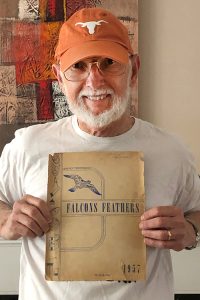
When school started in September 1956, I was thrilled to learn that Ann Richards would be my ninth-grade World History teacher. A week past her 23rd birthday, she was in her second year of teaching at Fulmore Junior High in Austin, Texas, where she’d quickly gained a reputation for being different from most teachers, mostly in a good way. She was … hmmm, how can we say this politely? OK, let’s just say that we hormonal boys were elated that we were in her class, as were our fathers, who attended Back-to-School night in record numbers.
There were few subjects more boring to me in those days than history, and most of my classmates felt the same. Ms. Richards kept us awake by cracking jokes, by reading to us from “Eloise” books, of which she was a fan, and by often drifting into topics not immediately related to the course.
During one of these digressions, we somehow began discussing James Hogg, governor of Texas from 1891–1895. Even within the broad boundaries of Texas grandiosity, Governor Hogg was not a major figure in world history. Someone asked if Hogg had really named his daughters “Ima” and “Ura.” Ms. Richards said Ima, yes, but Ura, no. While on the subject of awkward last names, the class segued into discussing Harry E. Butt, owner of the HEB grocery chain in Texas. When asked what he named his daughter, Ms. Richards smiled mischievously, a smile I can still remember two-thirds of a century later, and said, “Ophelia.”
Maybe there were a couple snickers, but few students got the joke; certainly, I didn’t. I had not yet read Hamlet, and didn’t even know that Ophelia was an actual name. Later that day, during English class, it hit me, and I laughed loudly. The teacher, a stern woman who lived to diagram sentences, said, “Jimmy Herrell! Why are you laughing?” “I just got it,” I blurted out. “Ophelia Butt!”
A couple of minutes later in the principal’s office, and not wanting to rat out Ms. Richards, I said only that I laughed at a joke I’d heard earlier. At his insistence, I told the principal the joke. He couldn’t contain a snicker.
At the end of the fall semester, Ms. Richards took maternity leave, not to return. After having a daughter, Cecile, who half a century later would gain national prominence as president of Planned Parenthood, Ms. Richards became active in Texas politics. In 1984, she nominated Walter Mondale for president at the Democratic National Convention, and at the 1988 convention, she delivered a speech in which she famously said that George H. W. Bush had been “born with a silver foot in his mouth.”
From 1991–1995, 100 years after James Hogg’s term, Ann Richards was governor of Texas, the second woman to be elected to that office. The first was Miriam “Ma” Ferguson, who ran successfully for governor following the 1924 impeachment and conviction of her husband, Governor James Ferguson. Her campaign slogan was “Two for the price of one,” and her campaign speeches consisted of introducing her husband and yielding the platform to him. So, Ms. Richards was the first and so far only woman to be elected governor of Texas in her own right.
After leaving Texas in 1963, I didn’t follow its politics, and I didn’t realize my ninth-grade teacher was that Ann Richards until Texas friends told me in 1993. In August of that year, I wrote to her, presented my credentials as her former student, and related the Ophelia joke and its consequences. In October, I received her reply, handwritten on a card embossed with the seal of the Governor of the State of Texas. She wrote in part: “I don’t remember the Ophelia story although you undoubtedly wouldn’t make it up. Truth is, I went to college with a young woman named Rusty who wisely decided that she would not marry a fellow with the last name of Butt.”
Alas, the Bush family got its revenge. Ms. Richards lost the 1994 gubernatorial election to W, partly attributable to the Bush team’s whisper campaign asserting that she was a lesbian. She remained active in politics, fought for liberal causes, taught at Brandeis, and died of cancer in 2006.
In Holland Taylor’s play, Ann, which my wife Joan and I saw at Arena Stage in 2019, the Ann Richards character quotes the real Governor Richards as saying, “Teaching junior high school was the hardest thing I ever did.” I glowed, knowing I’d been a small part of that.
Back to the Table of Contents
A Cat Memoir
By Randy Barker

Fur, off gold and swirly,
Seems right for a head held just so
For the right reason:
His master went to fetch what is over there
And he recounts the story,
Once again.
Details that tell the reader more?
This memoir has plenty.
A white tissue stands where he pulled its antecedent out.
The piano lid is up where he pounded out a three-key casual chord.
Photos he passed and glimpsed say this has been our life.
Outdoor light shines bright-to-soft across the wall.
Legible letters say who he is.
These details swirl around the piece
But the detail thoughtful readers will keep best
From this cat memoir pawing all over them
Is the sheer devotion this noble feline evinces
For their day-to-day togetherness like two princes.
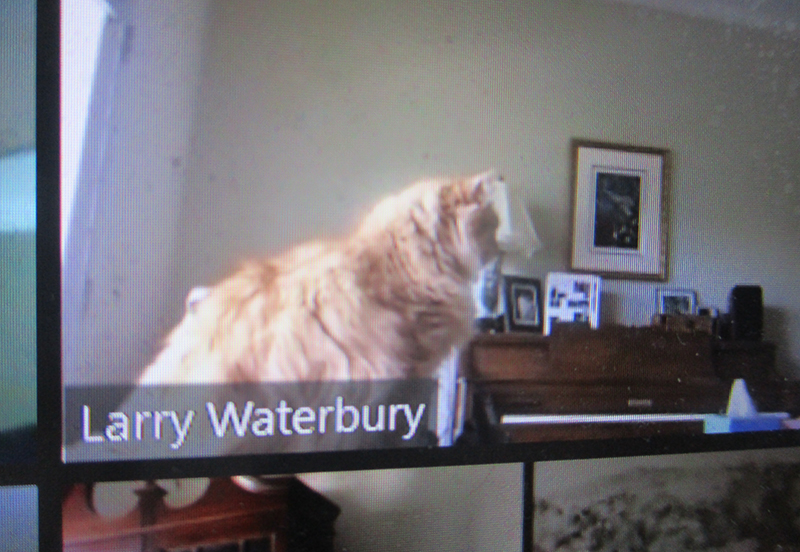
Back to the Table of Contents